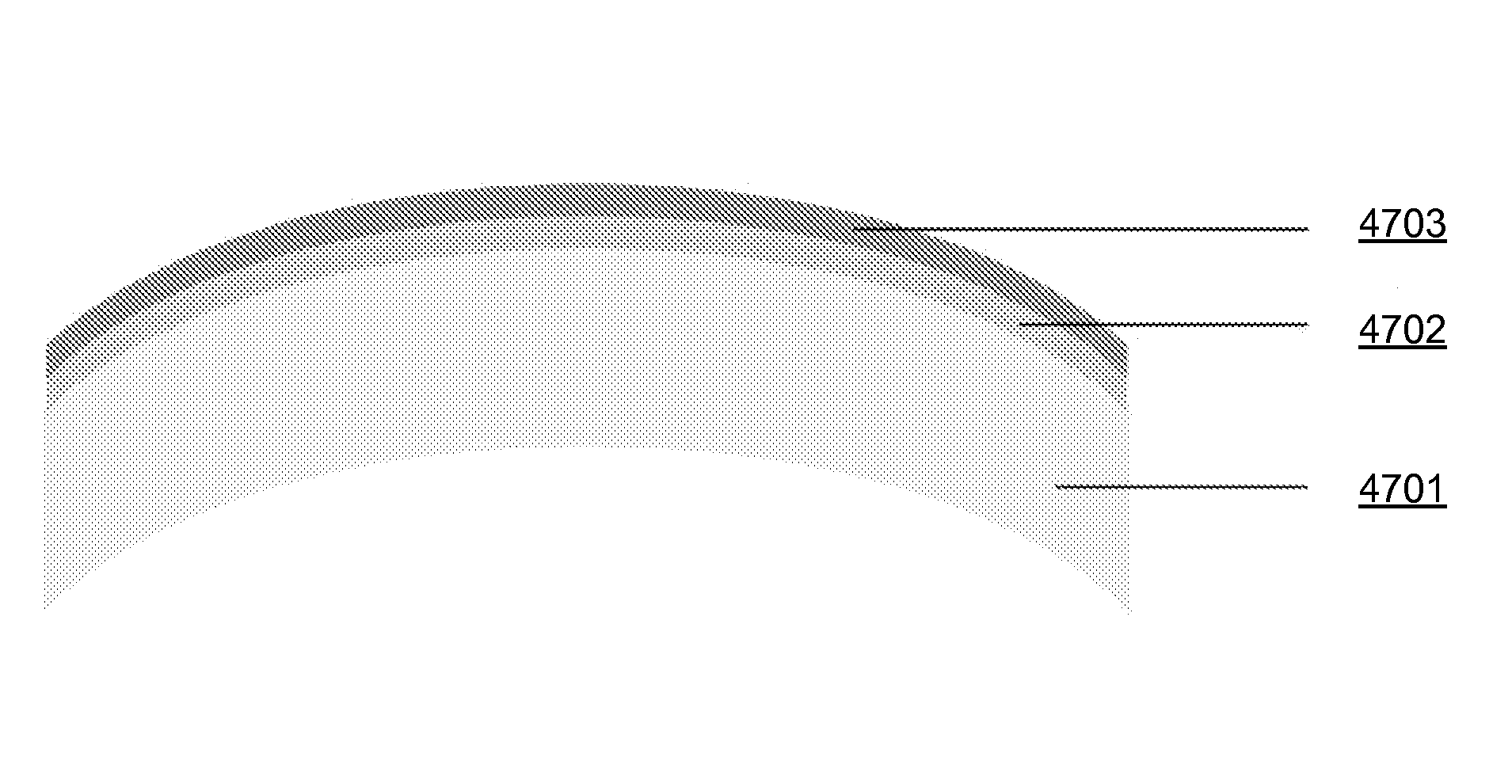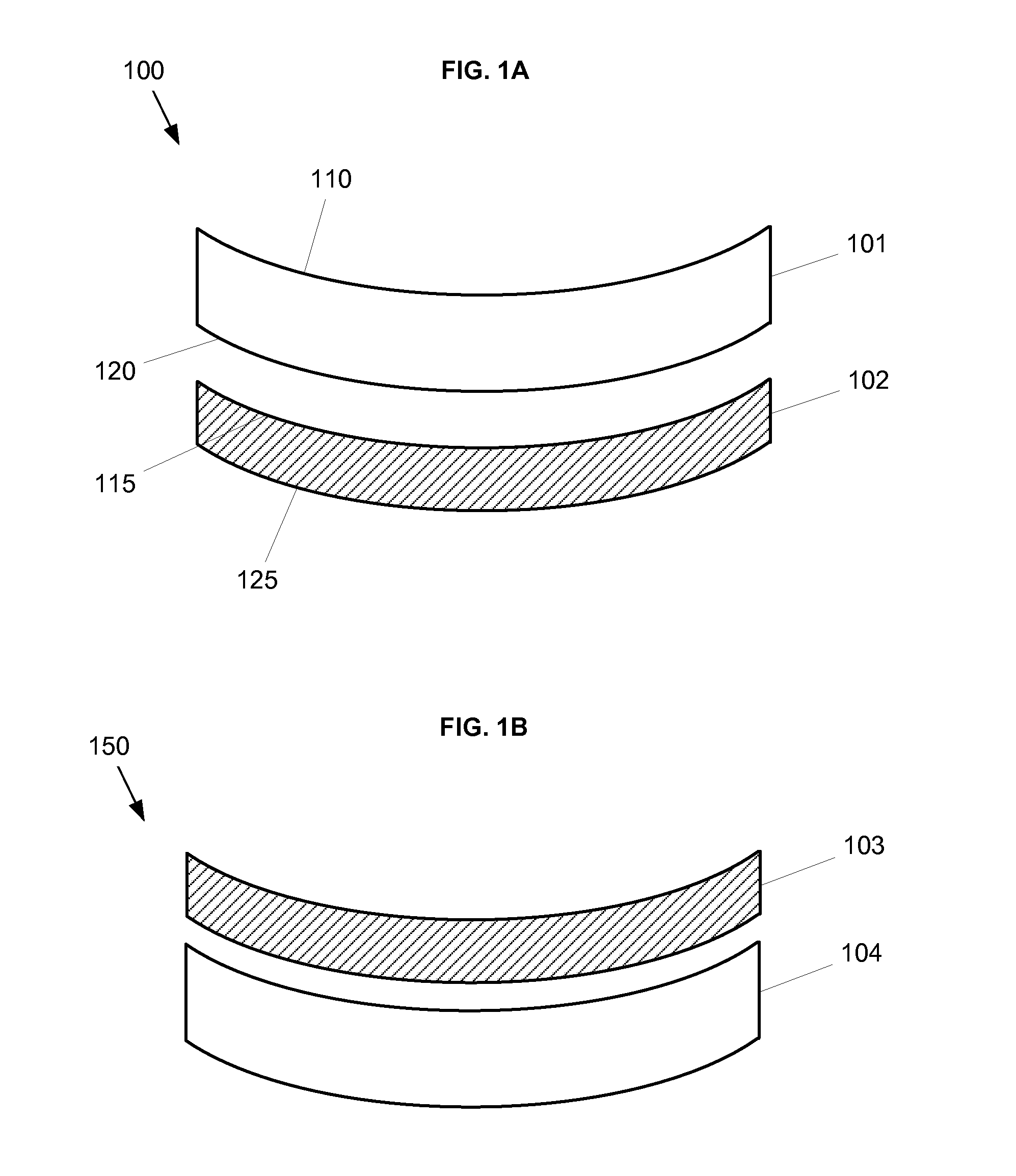High performance selective light wavelength filtering providing improved contrast sensitivity
a technology of light wavelength filtering and high-performance selective light, which is applied in the direction of spectacles/goggles, instruments, spectacles/goggles, etc., can solve the problems of blue light hazard, optical degradation of the lens or cataracts, and exposure to the shorter wavelengths. posing the greatest danger, and achieves the effect of improving contrast sensitivity
- Summary
- Abstract
- Description
- Claims
- Application Information
AI Technical Summary
Benefits of technology
Problems solved by technology
Method used
Image
Examples
example 1
[0196]A polycarbonate lens having an integral film with varying concentrations of blue-blocking dye was fabricated and the transmission spectrum of each lens was measured as shown in FIG. 45. Perylene concentrations of 35, 15, 7.6, and 3.8 ppm (weight basis) at a lens thickness of 2.2 mm were used. Various metrics calculated for each lens are shown in Table IV, with references corresponding to the reference numerals in FIG. 45. Since the selective absorbance of light depends primarily on the product of the dye concentration and coating thickness according to Beer's law, it is believed that comparable results are achievable using a hard coat and / or primer coat in conjunction with or instead of a film.
[0197]
TABLE IVPhoto-PhotopicScotopicCircadiantoxicityRatioRatioRatioRatioLensRef.(Vλ)(V′λ)(M′λ)(Bλ)Unfiltered light100.0%100.0%100.0%100.0%(no lens)Polycarbonate Lens451087.5%87.1%74.2%85.5%(no dye)3.8 ppm (2.2 mm)452088.6%86.9%71.0%78.8%7.6 ppm (2.2 mm)453087.0%84.1%65.9%71.1%15 ppm (2....
PUM
 Login to View More
Login to View More Abstract
Description
Claims
Application Information
 Login to View More
Login to View More - R&D
- Intellectual Property
- Life Sciences
- Materials
- Tech Scout
- Unparalleled Data Quality
- Higher Quality Content
- 60% Fewer Hallucinations
Browse by: Latest US Patents, China's latest patents, Technical Efficacy Thesaurus, Application Domain, Technology Topic, Popular Technical Reports.
© 2025 PatSnap. All rights reserved.Legal|Privacy policy|Modern Slavery Act Transparency Statement|Sitemap|About US| Contact US: help@patsnap.com



